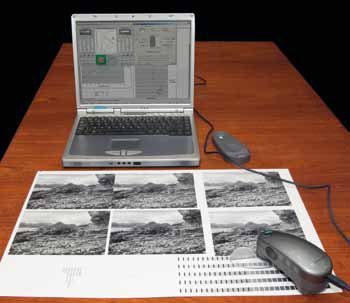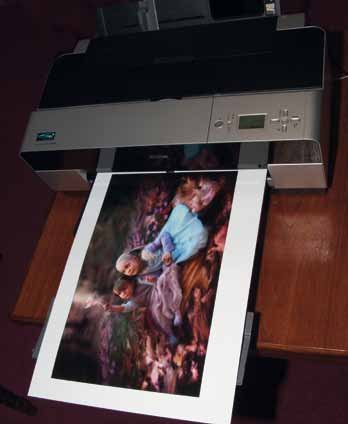articles/Printers/epsonstykuspro3880-page2
EPSON Stylus Pro 3880 A2 Printer - part 2 of 1 2 3
by Mike McNamee Published 01/02/2010

As usual, our pronouncements on print accuracy are based on instrumental measurement although as Jan Hardman's lovely Corel Painter illustration on the right shows, we also made 'real' prints. The painting was output onto various Hot and Cold Pressed media from Epson although the Traditional Photo Paper version, printing here, was particulaly sumptuous, making full use of the additional gamut of colour.
The Ink Set
The addition of Vivid Magenta ink increased the gamut of the printers using it. We looked in detail two years ago (how time flies!) at the 4880 and measured the boost at about 8% on Premium Luster Photo Paper. This brought additional Pantone colours into gamut but for the average user the change up to the 3880 is a marginal improvement on an already superb printer and you have to look with care to discern any differences.

The Colour Audits
Permajet Testing
Permajet profiled their 3880 using The X-Rite Eye 1 ISIS and Profile Maker 5.5. This is different to our X-Rite DTP41/Monaco Profiler Platinum set-up and might or might not be different to that used by the Epson engineers. We only mention this because it can make subtle difference to the outcomes of the profiling. Breaking open profiles to examine the authorship tags can be very hit and miss, and we see all manner of variations.
We had the opportunity to measure 26 surfaces for Permajet and have yet to fully analyse the data for them. However, the data so far look excellent and we have initially divided the data into two groups: those using Matt Black ink and those using Photo Black ink. The errors in the matt/art surfaces are associated mainly with the limiting density which is round 17% Lab luminance. In the break out of the statistics this shows as a rising error in the colour values for those tones with luminance components between 50% and that of the Macbeth black swatch (20% luminance, nominal). The average errors for PK are smallest for the black swatch with red standing out as the high error (this will bear some additional analysis in due course).
The Dmax was high and one reading of 2.51 was recorded. The CII was about 1.9 (Lab) for all settings of ABW and was also similar for the allcolours profiled print. In D65 light the 'all-colour' print was slightly green, but by a very tiny amount, a result confirmed by the measurements.
Regardless of the statistics, the resulting print was excellent, as always with Traditional Photo Paper, and the ABW driver produced the best quality of monochrome image
Please Note:
There is more than one page for this Article.
You are currently on page 2
- EPSON Stylus Pro 3880 A2 Printer page 1
- EPSON Stylus Pro 3880 A2 Printer page 2
- EPSON Stylus Pro 3880 A2 Printer page 3
1st Published 01/02/2010
last update 21/07/2022 08:46:24
More Printers Articles
There are 30 days to get ready for The Society of Photographers Convention and Trade Show at The Novotel London West, Hammersmith ...
which starts on Wednesday 14th January 2026










